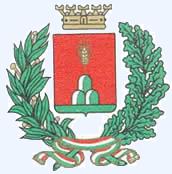
 Sunday 09 November 2025 10:25
Sunday 09 November 2025 10:25
Trevico
| Condividi |

|

|

|

|
Carife |
Castel Baronia |
Flumeri |
San Nicola Baronia
San Sossio Baronia | Scampitella | Vallata | Vallesaccarda
San Sossio Baronia | Scampitella | Vallata | Vallesaccarda
Town of Flumeri
 |
Inhabitant: 2971 (1461M 1510F) Surface: 34,24 Kmq Altitude: 716 m s.l.m. Phone Code: 0825 Postal Code: 83040 |
Of medieval epoch, it rises on the valley crossed by the streams Ufita and Fiumarella. In the locality Fioccaglia, the rests of an ancient city of epoch preroman are found, of which the name is not known. It seems that has been abandoned during the civil wars of the First century B.C.
In the second halves of XI century when it was gentleman the Norman Gradilone, child of Riccardo de Forma, Prince of Capua, finds Flumeri belonging to the Baronia of Vico.
After the dominations Norman and sveva, in 1507 it passed to the Spanish Consalvo of Cordova. They followed different families until to reach the Caracciolo, last Lords of the place.
The Church of S. Rocco, reconstructed to the beginnings of the XX century, stand out for his three external portals that give access to the respective aisles. It guards the relics of the Saint Protecting Rocco.
The Mother Church of S. Maria Assunta, again to the XVII century. Reconstructed in Gothic style after the 1930 earthquake, has been restored following the earthquake of the 1980. To the inside numerous works of art and some ancient frescos can be admired restored by the local artist Basilio Russo.
In the place Doganelle is possible to see a sixteenth-century building, Palazzo of Bufata, realized on behalf of Federico of Aragona in 1479 and used as residence of country by the Neapolitan Royal that approached you for the hunting.
The festival of S. Rocco is celebrated on the 15th and 16th of August. The inhabitants of Flumeri construct a Giglio made of ears of grain. The specific date of the first Giglio is not known, nor is it known if it is of pagan or Christian origin. It is constructed with five levels, made new every year
with panels decorated with grain. The five upper levels decrease in size to the peak, reaching a height of approximately 30 meters. On the peak of the Giglio is a straw flag
interwoven with the image of S. Rocco in the center. Originally the structure was made from a large tree chosen by a forester and transported from the country on a cart pulled by oxen. Since the '70's the tree has been replaced by a structure in the shape of a castle made from wooden beams. The construction of the structure is the job of the men, while the women devote themselves for approximately one month to making decorations by interlacing
ears of grain, which are then glued on different shaped panels and chains that are placed at the base of the Giglio. The transport to the center of the town, close to the S. Rocco Church, occurs on the 15th of August. The Giglio is hauled by a tractor adorned with interlaced chains of grain. The balance is maintained with sturdy ropes pulled by devout young people who keep it stable. After exhibition of the Giglio for approximately one month, the quintals of grain are sold to defray the expenses of the festival and of the worship in honor of the Patron Saint.
Carife |
Castel Baronia |
Flumeri |
San Nicola Baronia
San Sossio Baronia | Scampitella | Vallata | Vallesaccarda
San Sossio Baronia | Scampitella | Vallata | Vallesaccarda
Contact | Copyright | Privacy Policy
